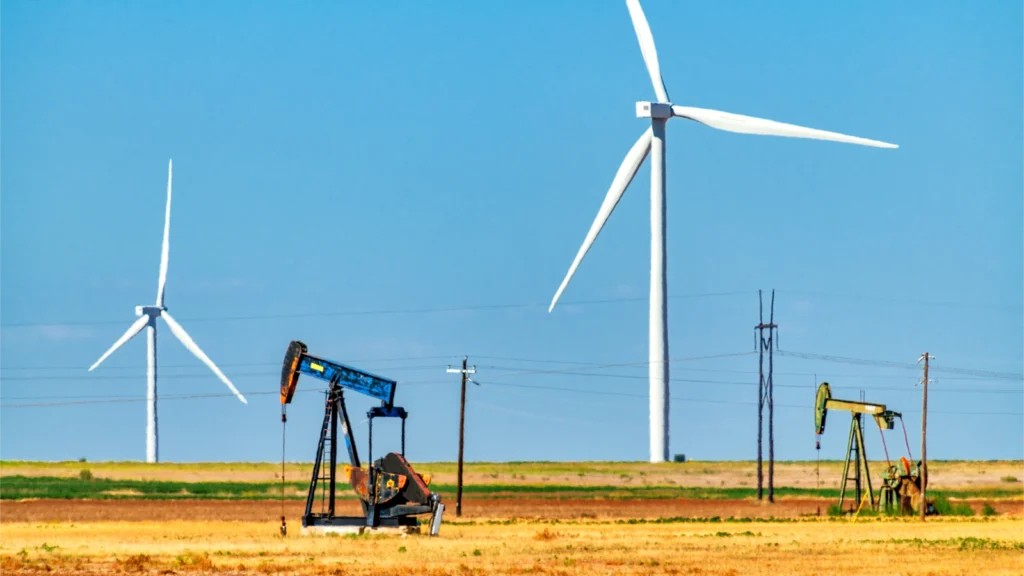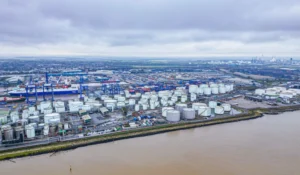Biden-Harris news: $2.2 billion approved for Texas and Midwest hydrogen hubs

The Biden-Harris administration has announced a monumental $2.2 billion federal funding package for two new clean hydrogen hubs: the Gulf Coast H2Hub and the Midwest H2Hub.
Forming part of the Department of Energy’s (DOE) ambitious Hydrogen Hubs (H2Hubs) program, the two major projects aim to transform the U.S. into a global leader in hydrogen production, whilst addressing emissions in ‘hard-to-abate’ sectors like steelmaking, refining, and heavy transportation – industries often referred to as the “final frontier” for decarbonisation.
With these hubs, the DOE’s H2Hubs initiative now counts seven projects spread across the U.S., each designed to create interconnected hydrogen ecosystems, to encourage private investment, and accelerate adoption of hydrogen as a mainstream energy source.
The combined impact of these hubs is planned to position clean hydrogen as a cornerstone in America’s energy transition.
Gulf Coast H2Hub: Texas’s green gold?
The Gulf Coast H2Hub, led by HyVelocity, is quite literally Texas-sized in its ambition and potential.
Centred in Texas, long synonymous with fossil fuel production, but drawing on the Gulf Coast region’s resources and infrastructure, the hub aims to flip the narrative by leveraging the region’s abundant renewable energy resources and natural gas supplies to produce clean hydrogen.
The Gulf Coast is no stranger to hydrogen – it already accounts for over a third of U.S. hydrogen production – but this initiative will now shift the focus to new low-carbon methods.
Key highlights:
Production methods:
Hydrogen will be produced via electrolysis (splitting water with renewable electricity) and from natural gas (paired with carbon capture technology to bury the CO2 instead of releasing it back into the atmosphere).
Job creation:
45,000 direct jobs are expected to be created, not to mention the ripple effects across the Gulf’s energy ecosystem.
Strategic importance:
The hub will capitalise on existing infrastructure, including the Gulf Coast’s extensive hydrogen pipeline network, the largest in the world.
Texas is already home to vast renewable power potential (wind turbines dotting the state produce more electricity than California’s entire grid).
By pairing this resource with innovative hydrogen production techniques, the Gulf Coast H2Hub could become a flagship for clean energy leadership – not just in the U.S., but across the globe.
Midwest H2Hub: From the ‘Rust Belt’ to the Green Belt?
Spanning Illinois, Indiana, Iowa, and Michigan, the Midwest H2Hub is spearheaded by the Midwest Alliance for Clean Hydrogen (MachH2).
Its focus is on decarbonising heavy industries, aiming to breathe new life into the region’s industrial corridors – the once, but somewhat forgotten, beating heart of America’s manufacturing economy.
Key highlights:
Industries benefiting:
Steelmaking, glass production, automotive manufacturing, and refining; the Midwest H2Hub will provide these industries with cleaner hydrogen, reducing their dependence on fossil fuels.
Energy sources:
A diversified mix of energy sources will be used to make the hydrogen, including wind, nuclear, and natural gas. Nuclear power is a standout here – as Illinois alone produces more electricity from nuclear energy than any other U.S. state.
Job creation:
An estimated 12,000 direct jobs will be created, many of which will be in high-skilled sectors like engineering and technology.
Illinois, Indiana, and Michigan together form a critical transportation corridor, with heavy freight rail and road networks crisscrossing the region.
The Midwest H2Hub could also serve as a proving ground for hydrogen-fuelled trucks, unlocking new possibilities there for cleaning up logistics.
Hydrogen’s role in America’s future
Clean hydrogen’s versatility is its greatest asset. It can replace fossil fuels in high-temperature industrial processes, power heavy-duty vehicles like buses and trucks, and even serve as long-term energy storage for renewable electricity.
By 2030, the seven H2Hubs funded under the DOE program are projected to produce millions of metric tons of hydrogen annually.
For context, if all seven hubs deliver as planned, they could collectively cut tens of millions of metric tons of CO₂ emissions annually – equivalent to taking millions of petrol-powered cars off the road.
That’s not only good for the planet, but it’s also very good for public health and environmental equity, especially in regions plagued by historic air pollution from industry.
Community and economic commitments
One standout feature of the H2Hubs program is its emphasis on community engagement and equitable economic benefits.
Both hubs have committed to creating high-quality jobs and engaging local stakeholders early in the process.
Virtual community briefings are planned to ensure transparency and give residents a voice in shaping the projects.
DOE’s Office of Clean Energy Demonstrations will oversee the projects, ensuring they deliver on environmental and social objectives.
Federal funding will be phased, with progress closely monitored to ensure benchmarks are met.
What does the future hold for clean energy in America?
The Biden-Harris administration are laying the foundation for a clean hydrogen economy, but questions remain about the direction these efforts will take under Donald Trump.
The President-Elect is set to take office in only a couple of months, and has consistently been a vocal advocate for the use of fossil fuels.
So while the momentum behind these projects is strong, a policy pivot could influence the scale and speed of their implementation.
Will hydrogen hubs continue to receive bipartisan support as a critical piece of America’s energy independence, or could a renewed focus on oil and gas temper their development?
For now, all eyes are on the DOE, regional leaders, and the private sector to keep the hydrogen vision alive.








